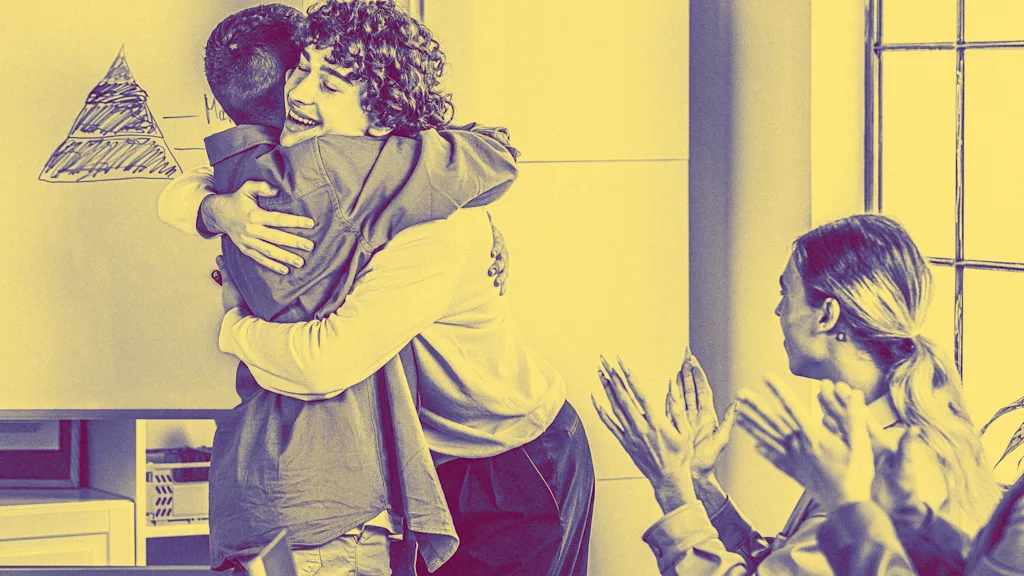
"Cultural moments like the #MeToo movement, as well as the hands-off norms established during the pandemic, have shaped opinions about when it's okay to touch someone else. Although most people don't greet their office mates with literal open arms each day, colleagues who've developed close bonds may feel inclined to hug from time to time."
"Cameron Herold is decidedly pro-hug. The founder of the COO Alliance (a coaching practice for chief operating officers) and former COO of 1-800-GOT-JUNK says he started his career in the straightlaced, suit-and-tie, handshakes-only late '80s. A trip to Burning Man in 2007 changed his ways. "Everybody was hugging. It pulled me way out of my comfort zone," he says. Since that trip, he greets just about everyone with an embrace, including former Sprint CEO Marcelo Claure upon meeting him roughly eight years ago. "I'm 6-foot-3 and he's 6-foot-7. I went in for an over-the-shoulder hug. He laughed, said that was a first ever," he recalls. That hug led to two lucrative coaching engagements with Claure and his then-chief operating officer, Herold recalls."
"But is it okay to hug your coworkers? Even if they're friends? It's a touchy subject, depending on whom you ask-perhaps the touchiest."
Cultural moments like the #MeToo movement and the hands-off norms established during the pandemic have reshaped expectations about physical contact at work. Colleagues who develop close bonds may occasionally feel inclined to hug, while most coworkers stick to less frequent, formal greetings. Flexible and remote work has made in-person meetings feel more event-like, increasing the impulse for warmer greetings. Individual comfort, situational context, and respect for boundaries determine whether a hug is appropriate. Some professionals embrace hugging as a personal norm, and such gestures can sometimes open unexpected personal or business opportunities.
Read at Fast Company
Unable to calculate read time
Collection
[
|
...
]